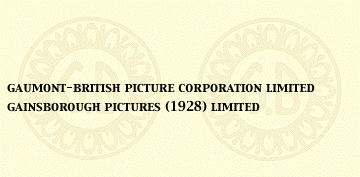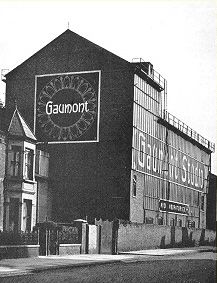



Production History (1898 to 1914)
The history of production at Lime Grove is largely the history of the British film industry, and a perspective of the whole world industry.
The first film production studios in England were established by the original Company in 1898 and the first studio was established at Freeman's Cricket Field in Dulwich. The first director was Alfred Collins. Many successful films were made at Dulwich, and it must be remembered that at that period England was the chief supplier of films for the American market, and to most of the Continent as well.
The titles of some of these early films are: "A Runaway Match," "Napoleon and the English Sailor," "Lost a Leg of Mutton," and "Curfew Shall Not Ring To-night."
Perhaps the most astonishing innovations of this period were the Chronophone and the Chronochrome. The Chronophone involved a synchronised gramophone disc sounding together with the silent picture, to produce a talking picture as early as 1902; twenty-five years before talkies came in.
The Chronochrome was an equally successful attempt at reproduction in natural colours by the simultaneous projection of three pictures through a coloured screen in green, red and purple violet; introduced In 1913.
Work at Dulwich continued, especially with the recording of important topical events, until in 1913 what may be said to be the first feature length film ever made in England was undertaken. This was "The Life of Richard Wagner," with an elaborate musical setting provided by the London Symphony Orchestra under the direction of Sir Landon Ronald.
In the same year it became quite clear that production must be undertaken on a far larger scale in England than ever before. Obviously far more extensive studios were necessary. So the first building ever erected in this country solely for the purpose of film production was erected with the most modern equipment and laboratories on the same site at Lime Grove in Shepsherd's Bush.

The studio in Lime Grove, Shepherd's Bush W12
1914
Production History (1914 to 1932)
Historically important in world film history was the first automatic film printing works set up at Lime Grove for world-wide trade in 1912. The original Lime Grove Studios (Britains's first purpose-built studio) were completed in 1914. When the war came it inevitably dislocated all previous plans. But the progressive work went on in the face of the most adverse circumstances.
The second film was directed by George Pearson. It was called "Ultus, the Man from the Dead," and was so successful that a series of Ultus pictures were made. The trade show of the original Ultus film was held in the studio itself and caused a great sensation at the time.
The "Ultus" series of pictures sold in every film market in the world. The next film to follow this series was "Sally Bishop" by E. Temple Thurston.
In 1915 another big innovation was brought about when the lighting was re-equipped in the most modern way. But, later, the Government took over the building and the studio was used for research and propaganda purposes, although film production was permitted to continue part-time. Thus the Shepherd's Bush Studios not only assisted in the propagation of the war, but also provided entertainment for a warweary public.
At the time of the Armistice a screen version of H. G. Wells's "The First Men in the Moon" was being made in the glass studio. Much research had been made into the questions of lighting and cameras, and the Company was the first to use gas-filled lamps on a large scale.
But it was, by now, obvious that more studio room was necessary, and rebuilding was decided upon. On 7th February, 1927, the foundation stone of the new Studios was laid, and a second studio was afterwards erected on the site of an old cottage and orchard.
The original studios opened in Lime Grove in 1914. An extension of the studios opened in 1927. The entire studios complex was demolished and rebuild on a much larger scale, opening in 1932.
Gainsborough Films.
The first film was released under the "Gainsborough" banner in 1924. Later, Gainsborough Pictures (1928) Limited was established as one of the associated production companies within the Gaumont-British Picture Corporation Limited. During this period films were produced under both banners, "Gaumont" and "Gainsborough".
The Gaumont banner was dropped in 1938, and all films produced from 1938 to 1950 were under the "Gainsborough" banner.
When "Talkies" came.
Once again a revolution in the industry caused a complete alteration in plans. Maurice Elvey was directing " High Treason" when talking films came like a bolt from the blue. The picture had to be turned into a " talkie " under the most difficult conditions. Sound-proofing had to be done while the film was actually being made.
Another important date occurred in the summer of 1931 when, during Victor Saville's direction of the talkie film version of "Hindle Wakes," the new condenser microphone of British Acoustic was first used. Since that date all Gaumont-British productions used this apparatus.